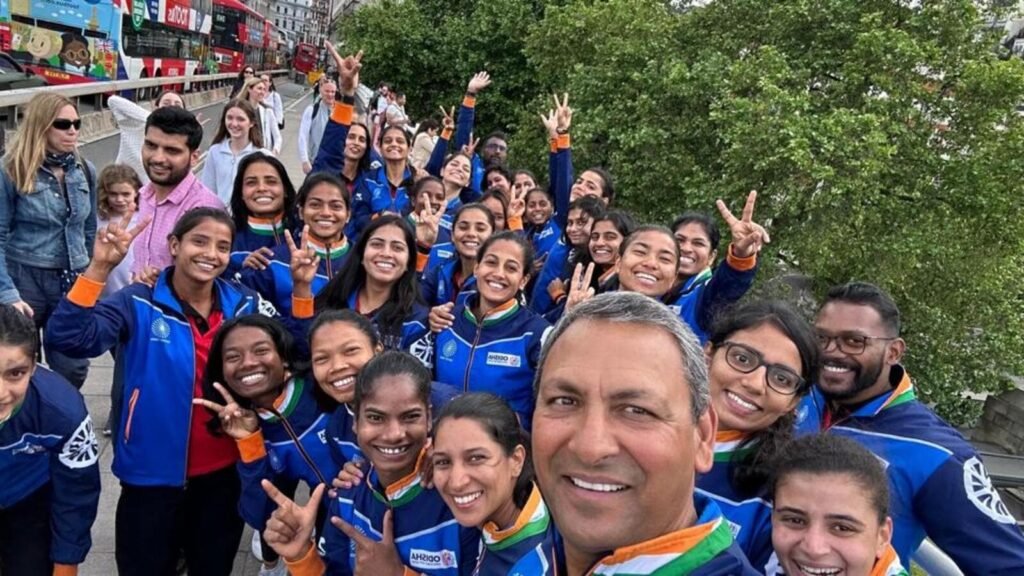After spending three years as the head coach of the US men’s team, it didn’t take Harendra Singh long to reacquaint himself with the practice of Indian hockey.
Harendra Singh, chief coach of the Indian women’s hockey team. (Hockey India)
Returning for the second time as the chief coach of the Indian women’s hockey team, the Dronacharya Award winner has been given the huge responsibility of rebuilding the team, especially after missing out on qualifying for the Paris Olympics.
In the interview, Harendra talks about the rebuilding phase, where the team is lagging behind, and how they are building a pool of drag flickers with LA 2028 in mind. excerpt:
It’s been half a year since you took charge. How is the team doing, especially after missing the Olympics?
I’m new to this system so it wasn’t too difficult to get used to. I used to be with girls. Many people are familiar with my coaching style. For me, it’s always about discipline, dedication and delivering what the team demands. It shouldn’t be about “me”, it should be about “us”. No matter what setbacks they had in the past, the girls realized they didn’t deserve to compete, even though they deserved it. We have hit the refresh button and are currently working hard to achieve our goal, which we have named “Mission 2028”.
India played eight matches under you in the Pro League between May and June and lost all of them. What were your team’s expectations and impressions of the show?
To be honest, I expected similar results. I told the girls I wasn’t expecting miracles. But I wanted to see if we were improving. If you look at the first leg in Antwerp and the second leg in London, there was a big difference. We have begun to close the gap with the top teams. We could have won the last three games. The main thing that was lacking, and really bad, was fitness. With strength and power, all teams made vertical passes and immediately launched attacks. This means your legs need strength to sustain 60 minutes. That’s what was missing. When you run out of gas and have less oxygen, your decision-making becomes slower.
What are the other areas where India lags behind?
Looking at the Paris Olympics, the two departments that all teams strengthened were penalty corners (PC) and goalkeepers. We have good athletes, but we need to work on these two areas because these are the two areas that bring us medals at the Olympics. Look at the men’s teams in China, the Netherlands, and even India. PR Sreejesh and Harmanpreet Singh’s play helped India win the bronze medal. It’s not all about PC conversion. Protecting your PCs is also an art. Amit Rohidas, India’s first goalkeeper, is a prime example. The true goalkeeper will only be involved if you beat him. If you want to win, you need to continually work on these processes.
Where do India stand in defense and attack for PC compared to the top teams?
Our PC defenses are very good, but that’s only part of the story. We are lacking in clearing indirect passes and are working on things that need to be strengthened. Then we have five or six girls working together on drag flicks that we didn’t have before. Over the next two years, we’re going to see a lot of drug flickers. Rupinder Pal Singh is helping me. The PCs are a direct threat, so the team needs a drag flicker. This is the only time you have a chance to score a straight goal. If you have a good drag flicker, your opponent won’t want to give you any PCs and your chances of getting a field goal will also increase. This balance is necessary.
Who is this drug flicker?
I work with Deepika, Ropni Kumari, Udita and 2-3 junior girls. We are looking for a developable physique for drag flicks. We haven’t looked into whether the player is a drug flicker. I would like to introduce a fresh face and start fresh. I will be scouting at Junior Nationals in Ranchi and Interdepartment Nationals in New Delhi.
At the 2016 Rio Games and the 2021 Tokyo Games, China failed to advance beyond the group stage. He finished with a silver medal in Paris. What can we learn from their rise?
The first thing was to create a large pool of athletes, which they did, and all athletes were given a place to perform before the Olympics. Not within China, but outside China. They went to Perth to play a four-nation event, held a camp and played a number of practice matches against the Australian team. They then went to Spain and once again played practice games against European teams. Also, the staff. During the Pro League, I heard from (China assistant coach) Rick Charlesworth that they had over 28 people on staff. It was like there was one staff member for each player (lol). The core group of (chief coach) Alison Annan, Rick, Adrian (Lock, Teke Tekema) made China a unit. Their fitness has improved significantly and they showed structure play by intercepting passes and directing vertical passes.
ACT will be his first full tournament since taking office. What do you think about India’s potential?
I’m really excited. This is my first competition. I want to build a strong foundation for my team. For athletes who lost confidence after missing out on the Olympics, this is a chance to regain confidence and get back on track for 2026 and 2028.

